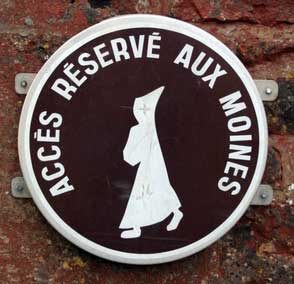 The Abbey of Orval, in Belgium’s Ardennes Forest, is truly a place of mystery. The name “Orval” means “Valley of Gold”.
The Abbey of Orval, in Belgium’s Ardennes Forest, is truly a place of mystery. The name “Orval” means “Valley of Gold”.
Nostradamus was said to have written a number of his prophecies here. Possibly, there were once no less than two treasures hidden in this wonderful place: the Treasure of the Knights Templar and the War Chest of Louis XVI and Marie Antoinette.
In the book, Holy Blood and the Holy Grail (Michael Baigent, Richard Leigh & Henry Lincoln) we are told that in 1070, 29 years before the First Crusade, some monks from Calabria, southern Italy, arrived in the Ardennes Forest that belonged to Geoffrey of Bouillon. The monks were led by and individual named Ursus, who ‘“ according to the so-called Priory Documents ‘“ was consistently associated with the Merovingian bloodline, or in other words: with the descendants of Jesus Christ.
 The monks were welcomed by Count Arnould of Chiny and by Geoffrey’s aunt and foster-mother Mathilde of Tuscany, Duchess of Lorraine. From Mathilde they received the land that is now known as Orval, not far from Stenay, where once King Dagobert II was assassinated. Before these monks settled in Orval, there wasn’t any human habitation, although there were some Merovingian tombs discovered near a well. A well-known legend says that the monastery was born out of gratitude. Mathilde, a widow, had lost her golden wedding ring, which had accidentally fallen into the fountain. She prayed to the Lord and suddenly a trout rose out of the water with the precious ring in its mouth. “Truly,” Mathilde exclaimed, “this place is a Val d’Or, a Valley of Gold!”
The monks were welcomed by Count Arnould of Chiny and by Geoffrey’s aunt and foster-mother Mathilde of Tuscany, Duchess of Lorraine. From Mathilde they received the land that is now known as Orval, not far from Stenay, where once King Dagobert II was assassinated. Before these monks settled in Orval, there wasn’t any human habitation, although there were some Merovingian tombs discovered near a well. A well-known legend says that the monastery was born out of gratitude. Mathilde, a widow, had lost her golden wedding ring, which had accidentally fallen into the fountain. She prayed to the Lord and suddenly a trout rose out of the water with the precious ring in its mouth. “Truly,” Mathilde exclaimed, “this place is a Val d’Or, a Valley of Gold!”
You still can visit the well, where she established a monastery.
A Merovingian Play
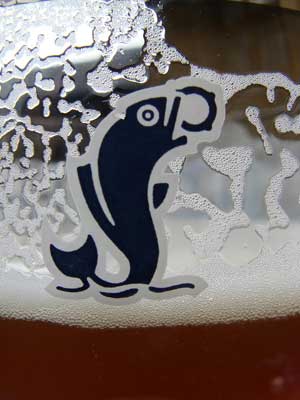 Interestingly, the theme of the wedding ring falling into the water also shows up in the play Pelléas and Mélisande (1892) by the Belgian Nobel Prize Winner (1911) Maurice Maeterlinck. His work, characterized by fatalism and mysticism, forms an important part of the Symbolist Movement. The play was first performed in 1893 and several composers made music for it. Claude Debussy’s impressionist opera is perhaps the best known adaptation.
Interestingly, the theme of the wedding ring falling into the water also shows up in the play Pelléas and Mélisande (1892) by the Belgian Nobel Prize Winner (1911) Maurice Maeterlinck. His work, characterized by fatalism and mysticism, forms an important part of the Symbolist Movement. The play was first performed in 1893 and several composers made music for it. Claude Debussy’s impressionist opera is perhaps the best known adaptation.
The Dossiers Secrets mention Debussy was Grand Master of the Priory of Sion, the keepers of the Bloodline Secret according to Holy Blood Holy Grail. Perhaps coincidentally, it was under his ‘reign’ that the parish priest of Rennes-le-Château, Bérénger Saunière, found some parchments in his church. According to Gérard de Sède in his book the Accursed Treasure of Rennes-le-Château Saunière discovered and solved the puzzle coded in their texts. The solution allegedly led him to the occultist and even satanist circles of Paris. These secret societies included other renegade priests such as Louis Van Haecke, Chaplain of the Holy Blood Chapel of Bruges, the famous opera singer Emma Calvé, and writers like as Oscar Wilde, André Gide, W.B. Yeats or’¦ Maurice Maeterlinck.
Pelléas and Mélisande was called a fairy tale and “a Merovingian play”. Prince Golaud finds Mélisande by a river in the woods, weeping because she has lost her crown in the water. She does not wish to retrieve it, marries Golaud in a hurry and wins the favour of the old King Arkel, who is very ill. But then she falls in love with Pelléas. They meet at a fountain and Mélisande now loses her wedding ring in the water.
The main theme of the work however is the cycle of creation and destruction. The prologue in which servants can’t wash the dirt from the steps of the castle and which introduces the illness of Arkel, the famine in his kingdom and the foul-smelling waters under his slowly disintegrating castle remind us of the Grail romances, the Fisher King and the Waste Land.
An Abbey in Ruins
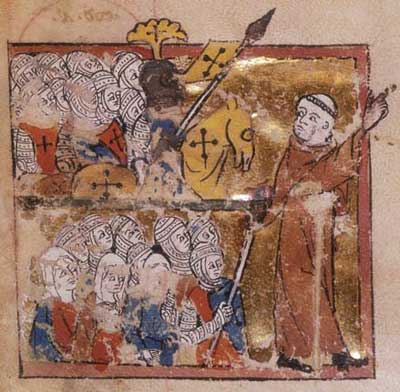 One of the monks who lived in Orval was Peter the Hermit, Geoffrey of Bouillon’s tutor. Peter became famous by tirelessly travelling around France to preach to the masses about the occupation of the Holy Sepulchre and the Holy Land. His journey brought him from Berry (central France) across Champagne and down the Meuse valley to Cologne, leading his enthusiastic followers across Europe to Constantinople in May 1096. By that time Pope Urban II had proclaimed the First Crusade during the Council of Clermont (November 1095).
One of the monks who lived in Orval was Peter the Hermit, Geoffrey of Bouillon’s tutor. Peter became famous by tirelessly travelling around France to preach to the masses about the occupation of the Holy Sepulchre and the Holy Land. His journey brought him from Berry (central France) across Champagne and down the Meuse valley to Cologne, leading his enthusiastic followers across Europe to Constantinople in May 1096. By that time Pope Urban II had proclaimed the First Crusade during the Council of Clermont (November 1095).
In 1108 the monks had mysteriously disappeared from Orval. There is no record of their destination, but it may well have been Jerusalem. Peter the Hermit arrived in Jerusalem with his pupil Geoffrey in the spring of 1099. De  Bouillon was offered the throne of the Crusader Kingdom by an anonymous conclave, led by a monk from Calabria.
Bouillon was offered the throne of the Crusader Kingdom by an anonymous conclave, led by a monk from Calabria.
By 1131 Orval became one of the fiefs owned by Bernard of Clairvaux, writer of the rule of the Knights Templar. He entrusted the re-establishment of Orval to the Abbey of Trois-Fontaines in the Champagne region and for five centuries, the Cistercians of Orval led a quiet life. Nevertheless, the abbey prospered.
In 1605 Bernard de Montgaillard, born in southern France, managed to get himself appointed an Abbot by Archduke Albert and his wife Isabelle. He restored the buildings, reformed the constitutions of the community and put the monastery back on its feet economically. Bernard died in 1628. His last wish was kindly granted: he was buried at the foot of the stairs of the dormitory to the church. His brothers would walk all over him, both on their way up or down, so they would be constantly reminded to pray for him.
During the French Revolution the Abbey survived many a serious alert. However on June 23 of the year 1793, revolutionary troops led by General Loison sacked and burned the monastery down to the ground. The community withdrew to its refuge in Luxembourg. For more than a century the charred walls of Orval were at the mercy of the weather and treasure hunters…
You still can visit the impressive ruins of the old abbey today.
Nostradamus and the Bourbon War Chest
The fervour of General Loison and assorted treasure hunters, was caused by rumours of a Royalist War Chest, hidden somewhere on the Orval domain.
In the spring of 1791, the French King Louis XVI had become a prisoner in his own country. His wife, Marie Antoinette, was begging her brother the Austrian Emperor to help them. Unfortunately for her the messages of her couriers were intercepted and the codes broken. The royalist General de Bouillé turned the fortress town of Montmédy, in the northeast of France, into a safe place for the Royals. In case of an emergency, the Royals could cross the border with the Austrian Netherlands to find refuge in the nearby Abbey of Orval.
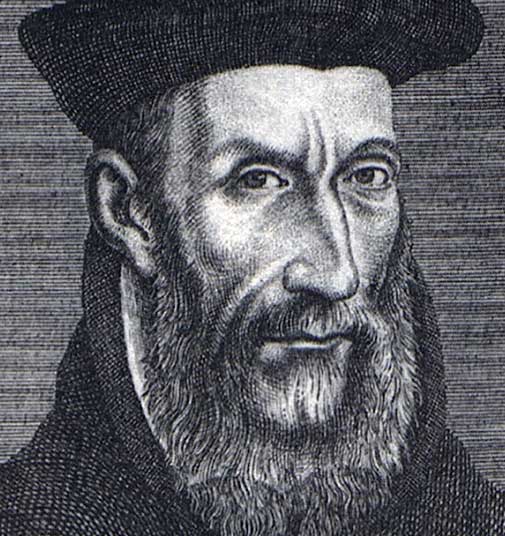 Michel de Nostradame, better known as the prophet Nostradamus is assumed to have foreseen the flight of the French King and his Queen in one of his dark verses. In Quatrain 20 of the Ninth Century (Q20, C9):
Michel de Nostradame, better known as the prophet Nostradamus is assumed to have foreseen the flight of the French King and his Queen in one of his dark verses. In Quatrain 20 of the Ninth Century (Q20, C9):
The night falls, trough the forest of Reims they come
In two parts to Orval, Herne, the white stone.
Now that the monk is in Varennes, in black and grey,
will the choice of Capet be the cause of storm, fire, blood, axe…
General de Bouillé realized 20 and 9 would make up a perfect code for him and his fellow conspirators and one that could not be broken. King Louis XVI and Marie Antoinette could indeed take the route through the forest of Reims, to Montmédy and Orval. In Varennes, a descendant of Hugh Capet, would bring storm and fire upon these bloody republicans!
The Royal Treasure of the Bourbons, packed in a War Chest was entrusted to Leonard, the royal hairdresser. It was his job to bring the Chest to the Abbey of Orval for safekeeping. What General de Bouillé couldn’t imagine, was that Louis XVI would be arrested in Varennes and that the King of France and his wife Marie Antoinette would lose their heads to the axe of the guillotine. While King and Queen never made it as far as Orval, the royal hairdresser did. Together with Leonard, the Bourbon Royal Treasure was hidden never to resurface again.
Nostradamus and the Knights Templar
 Some years a go Rudy Cambier, a retired Belgian professor published his book Nostradamus and the Lost Templar Legacy. In his book he claimed that the French language used by Nostradamus was in fact 14th century Picard the dialect spoken in a region of Flanders between the Dendre and the Escaut. Reading the Centuries the way they had really been intended, they turned out to have been written by a Cistercian monk by name of Yves de Lessines. He was the Prior of the Cistercian Abbey of Cambron, the place where the Knights Templar deposited certain documents regarding their secrets and their treasure at the time of their suppression. De Lessines, not wanting to take the secret into his grave, penned the story down in dark verses, describing the location of the Templar Treasure. Cambier located the spot described in the quatrains. Groundscans have demonstrated that some barrels appear to be buried in the exact location but since the Belgian authorities deny permission, an excavation hasn’t taken place to this day.
Some years a go Rudy Cambier, a retired Belgian professor published his book Nostradamus and the Lost Templar Legacy. In his book he claimed that the French language used by Nostradamus was in fact 14th century Picard the dialect spoken in a region of Flanders between the Dendre and the Escaut. Reading the Centuries the way they had really been intended, they turned out to have been written by a Cistercian monk by name of Yves de Lessines. He was the Prior of the Cistercian Abbey of Cambron, the place where the Knights Templar deposited certain documents regarding their secrets and their treasure at the time of their suppression. De Lessines, not wanting to take the secret into his grave, penned the story down in dark verses, describing the location of the Templar Treasure. Cambier located the spot described in the quatrains. Groundscans have demonstrated that some barrels appear to be buried in the exact location but since the Belgian authorities deny permission, an excavation hasn’t taken place to this day.
Even though an army of researchers has been looking for them for centuries, to this day no original edition of Nostradamus’ prophecies was ever found. Cambuur concludes Nostradamus simply destroyed the original manuscripts of the Centuries. It was obvious to him why Nostradamus did this: to destroy the evidence of his plagiarism.
In his book The Secret of Nostradamus (1927) occultist P.V. Piobb stated that the prophecies of Nostradamus had actually been written by the Templars. The true nature of the Quatrains was that of instructions, given to future individuals. The Centuries were, in other words, a coded manual.
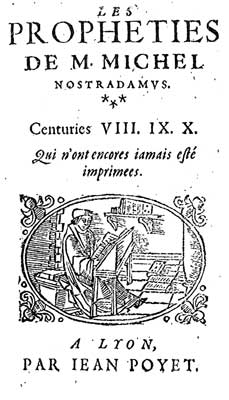 There are certainly a bunch of quatrains speaking of a Temple and a Treasure. In Q1, C5 we hear about a celtic ruin and two people who argue in the Temple – the great one, mounted on a steed, is murdered and buried without making noises. Q7, C9 tells us of a curse, or a booby trap: evil will come to the person who opens the tomb. Q81, C11 speaks of a treasure in the secret place of a Temple and Q9, C6 says that in Sacred Temples scandals will be perpetrated, but they will be seen as honours. In Q13, C10 soldiers are hidden – their arms are making noises – beneath the food of ruminating animals (hay, for example). The animals lead the soldiers to a subterranean place or a city with a name that has “grass”, “herb” or “weed” in it.
There are certainly a bunch of quatrains speaking of a Temple and a Treasure. In Q1, C5 we hear about a celtic ruin and two people who argue in the Temple – the great one, mounted on a steed, is murdered and buried without making noises. Q7, C9 tells us of a curse, or a booby trap: evil will come to the person who opens the tomb. Q81, C11 speaks of a treasure in the secret place of a Temple and Q9, C6 says that in Sacred Temples scandals will be perpetrated, but they will be seen as honours. In Q13, C10 soldiers are hidden – their arms are making noises – beneath the food of ruminating animals (hay, for example). The animals lead the soldiers to a subterranean place or a city with a name that has “grass”, “herb” or “weed” in it.
On Friday 13 October 1307, immediately after the arrests of the Templars in their Paris headquarters, the agents of the French King discovered that the Templar treasure had vanished and so had almost the entire Templar fleet. A Templar sergeant confessed that the Order was tipped off about the arrests. A small group of knights had managed to sneak the treasure out of Paris in three carts covered with hay. They fled to La Rochelle, a port on the Atlantic coast, destination unknown.
Nostradamus in Orval
 It is a known fact Nostradamus spent some time in the castle of Fain, one hour’s walk from Orval. He spent some time in the Abbey. The French writer Patrick Ferté believes Nostradamus was the Solitaire d’Orval, a prophet who predicted the coming of the Great Monarch. Coincidentally or not that is the name of the hotel in Varennes where Louis XVI got arrested.
It is a known fact Nostradamus spent some time in the castle of Fain, one hour’s walk from Orval. He spent some time in the Abbey. The French writer Patrick Ferté believes Nostradamus was the Solitaire d’Orval, a prophet who predicted the coming of the Great Monarch. Coincidentally or not that is the name of the hotel in Varennes where Louis XVI got arrested.
Both Lincoln, Baigent & Leigh and Gerard de Sède stated that, in Orval, Nostradamus was exposed to secret teachings linked to the Priory of Sion. He is said to have been shown an ancient and arcane book, on which he based all his subsequent work. This book was given to him at the Abbey of Orval to which it was donated by Mathilde, foster-mother of Geoffrey of Bouillon.
There are three Quatrains that could easily be interpreted to be talking about a Treasure in Orval.
Q27, C1 is about a treasure that for many centuries has been gathered and was hidden beneath an oak tree that got struck by lightning. When the treasure is found, a man must die, his eye pierced by a spring. A legend says that Nostradamus often was sitting under an old oak tree, near the botanical garden of the monastery. The tree got struck by lightning but you can take a seat now on the wooden bench under another oak tree and look at the herbs in the garden…
 Q66, C8 mentions an “inscription D.M. that is to be found in an ancient cave, revealed by a lamp”.
Q66, C8 mentions an “inscription D.M. that is to be found in an ancient cave, revealed by a lamp”.
Q27, C2 tells us about a divine word, struck from the sky, and when you can’t proceed any further, you will see the secret that is locked away with the revelation, as if one will march over it and ahead. Well, under the oak tree, near the herb garden, you are only a few steps away from the inscription D.M., and there, where the Secret is locked away with the revelation, you can walk over and ahead it.
I’m talking about the grave of Bernard De Montgaillard. Some stones are all that is left, but they do mark the place where the Abbot was buried.
Patrick Bernauw is living in the Dutch speaking part of Brave Little Belgium. He is a full time writer of historical mysteries and faction thrillers, performer and mystery game producer.
Check out:
The Lost Dutchman’s Historical Mysteries
Patrick Bernauw’s Haunted World
©2007-2012 renneslechateau.nl, all rights reserved. Orval Panorama by Gr0uch0. Original photos copyright Patrick Bernauw



I’ve got this very interesting reply by author Allen Goldenthal to my article above:
“He was the Prior of the Cistercian Abbey of Cambron, the place where the Knights Templar deposited certain documents regarding their secrets and their treasure at the time of their suppression.”
While Rudy’s thesis could very well be true, this snippet, above, is pure bunkum.
The history of the creation of Orval (centuries after the Merovingians) has been thoroughly researched and demystified.
One can’t help but get the impression that all these “researchers” are “frozen in time”, in the period of Plantardesque inventions, and haven’t gone back to see what archeology and a concerted search of archives have taught us since 1960.
please don’t post this.
But:
When looking for more about Allen Goldenthal, I found that his job is doing experiments with living dogs:
http://savethebeagles.wordpress.com/who-is-allen-goldenthal/
of course this has nothing at all to do with his ancestors’ stories.
daag
Hannes/Eginolf
To Roger:
The snippet is merely saying Yves de Lessines was the prior of Cambron – and that’s exactly what Rudy Cambier says. (I was describing his thesis here!)
I’ve said nothing about the creation or the prior of Orval or whatever in this context. What you say is a “bunkum snippet”, is merely Rudy’s thesis, which – indeed – could very well be true.
I approach this from a different angle. I am looking for some sort of relationship between Orval, and Avioth and Montmedy along with several other local place names Bouillion, tenay,Chiny for example. there are also some names that are significant: Chiny,Bouillion,Barnard.Enjoying it immensly as i used to live in the middle of it all. There are some common deniminators that is evident and perhaps a unifying theoring that includes Louis XIV and Nostradamus. I have an enjoyable picture in my head and that is a knight wending his way home from the week of jousting at chauvency le chateau and looking up on hearing a roar and seeing a Royal Canadian Air Force CF-104 from 439 Tiger Squadron, RCAF station No.1 (fighter) Wing Marville France. The dates? 1285 and 1965.
Any info greatly appreciated.
The Don Quixote-esk Knight making his way home after the weeks tournoi, btw has a name, Henri de Virton